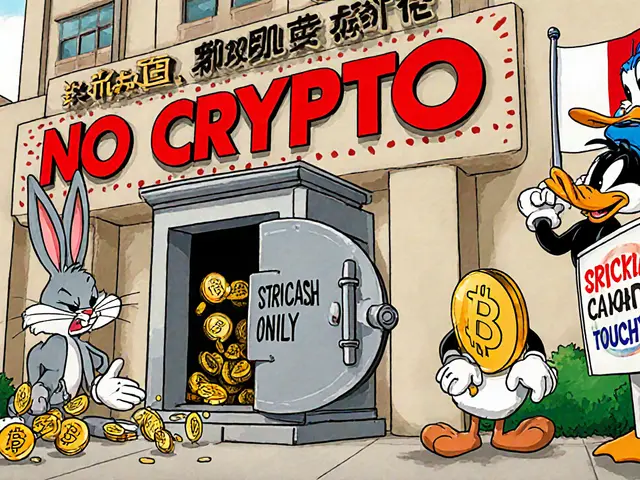CELR Token: The Engine Behind Celer Network’s Fast, Low‑Cost DeFi
When working with CELR token, the native utility token of the Celer Network, a layer‑2 scaling platform for Ethereum and other blockchains. Also known as CELR, it fuels fast off‑chain transactions, rewards validators, and powers a suite of DeFi services.
Celer Network, a multi‑chain scaling solution that uses state channel technology to move transactions off the main chain is the backbone that lets CELR achieve sub‑second finality and near‑zero fees. The network’s design hinges on three core components: cChannel for off‑chain payment channels, cOS for operating system‑level services, and cBridge for cross‑chain asset transfers. Together they create a seamless bridge between high‑throughput DeFi apps and the security of base layer blockchains.
The rise of layer‑2 scaling, technologies that process transactions off‑chain while preserving L1 security has reshaped the crypto landscape. By offloading heavy computation, layer‑2 solutions cut gas costs by up to 99%, making micro‑transactions and high‑frequency trading viable. CELR token holders benefit directly because the network’s fee‑sharing model allocates a portion of saved gas fees back to stakers, creating a tangible economic incentive to secure the system.
In the DeFi arena, a DeFi token, any digital asset that powers decentralized finance protocols must balance utility, liquidity, and governance. CELR ticks all three boxes: it is used to pay transaction fees, it can be staked to earn rewards, and it grants voting rights on protocol upgrades. This trifecta makes CELR a prime example of how a utility token can drive both network performance and community participation.
Tokenomics matter. CELR’s total supply is capped at 10 billion tokens, with a significant portion allocated to ecosystem incentives, team vesting, and community grants. The inflation rate is designed to taper over time, ensuring that early adopters receive meaningful rewards while long‑term holders see diminishing dilution. Staking rewards are calculated based on the amount of CELR locked and the overall network usage, so as more dApps launch on Celer, payouts tend to rise.
Staking is straightforward: users lock CELR in the official staking contract, select a validator, and start earning a share of the fee pool. The process is fully transparent—staking ratios and reward rates are displayed on the network dashboard in real time. Because rewards are paid in CELR, stakers benefit from both the token’s price appreciation potential and the direct fee share.
Cross‑chain compatibility expands CELR’s reach. Through cBridge, assets can move between Ethereum, BSC, Polygon, and other supported chains without sacrificing speed. This interoperability means that DeFi projects built on different networks can still tap into Celer’s low‑latency infrastructure, creating a network effect that drives demand for the CELR token.
Security is baked into the design. The state channel model prevents most attacks that plague on‑chain contracts because most transactions never hit the public ledger. When disputes arise, the system falls back to on‑chain settlement, leveraging Ethereum’s robust security guarantees. For token holders, this layered protection translates into lower risk of loss due to network congestion or front‑running.
What to Expect Next
Below you’ll find a curated collection of articles that dive deeper into specific aspects of the CELR ecosystem—wrapped tokens, fee structures, staking strategies, and real‑world use cases. Whether you’re a trader looking for the next opportunity or a developer seeking to integrate Celer’s SDK, the posts below will give you actionable insights and up‑to‑date data.







Categories